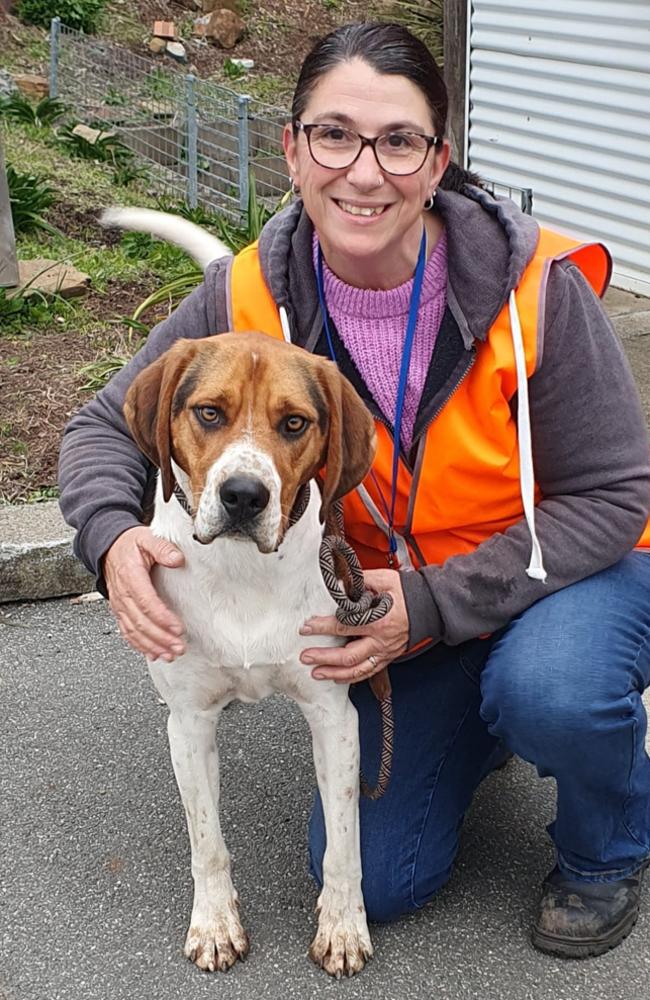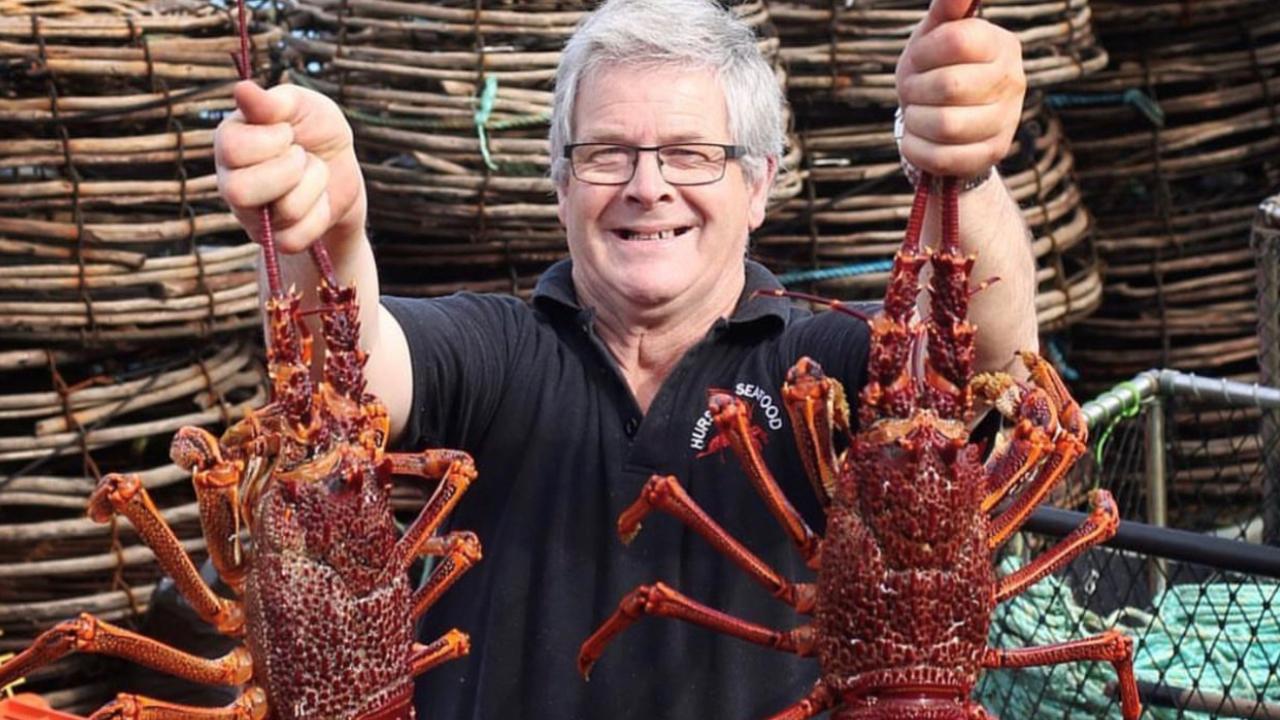‘Heartbreaking’: Tasmanian Dogs no-one wants exhibit stress, sadness
Shelters are finding some breeds of dogs are particularly hard to re-home, with some staying more than a year. Here’s some of the long-term residents looking for a home.

Tasmania
Don't miss out on the headlines from Tasmania. Followed categories will be added to My News.
Some dogs are spending more of their life in a shelter than a home of their own as cost-of-living pressures begin to impact dog adoptions in Tasmania.
“We believe current economic pressures may be discouraging people from adopting dogs perceived as high-maintenance … such as hounds,” said Alexandra Bray, a spokesperson from Dogs’ Homes of Tasmania, which has shelters across the state.
“The cost of living is creating pressure and stress on households.
“Subsequently we hear more and more that people have less time and energy to dedicate to a dog.
“And if they think a dog is going to be ‘hard work’, then that dog just becomes out of the question.”
Hound breeds such as Beagles and Basset Hounds are proving particularly challenging to rehome, with some staying more than a year.

Ms Bray says hounds have topped the longest-stay list for years, with any dog staying more than three months considered a long-stay. The aim for rehoming efforts is within 5-7 days of the dog arriving at the shelter.
AJ and Tucker have been in the Risdon Vale shelter since the beginning of 2024, while Bernie and Murray, who recently found homes, stayed 460 and 190 days respectively.
Murray’s distress was clear to the staff and difficult to witness and manage.
“He used to climb onto a viewing platform in one of our yards and howl out to the world in moments of frustration and sadness. He was over it,” Ms Bray recalls.
Ms Bray said hounds can be viewed as challenging dogs due to their scent drive and hunting background, while other breeds carry stigma due to misconceptions regarding their behaviour and perceived characteristics.


Australia-wide, the top three breeds surrendered to the RSPCA are English Staffordshire Bull Terrier cross, American Staffordshire Bull Terrier cross and Bull Arab cross.
The easiest dogs to rehome are purebreds and smaller dogs, said Ms Bray.
Small, purebred dogs “will last no time at all” with hundreds of people often applying to adopt the dog, such as happened with the Labradoodle puppy farm in the state’s north earlier this year.
“There were more people wanting to adopt those [Labradoodle] dogs than there were dogs,” observed Ms Bray.
“Which is lovely. However, we certainly saw that many people thought these dogs would be ‘easy’ or had limited insight into how their breeding could negatively impact them.”
Shelter life is hard on dogs, said Ms Bray, with loud noises, unfamiliar smells and too much or too little socialisation common.

The longer a dog is in the shelter, the worse the toll on its mental and emotional wellbeing, with some long-stayers exhibiting “signs of stress, frustration, or sadness”.
“It can be heartbreaking to witness.” Ms Bray said. “Some dogs may develop undesirable behaviours to try and cope with these stressors … which then makes them harder to adopt.”
In the past, on rare occasions, long-stayers have had to be euthanized.
This action is taken when the dog is so unhappy in shelter care that it is deemed “cruel” for them to continue that life.
But before it gets to that point carers first deploy a range of management strategies including spending extra time with staff and volunteers, additional enrichment activities, calming products, medicines and giving dogs time in offices or foster care.
“Every day in a shelter is one too many,” Ms Bray says.
Originally published as ‘Heartbreaking’: Tasmanian Dogs no-one wants exhibit stress, sadness






